 |
||
|
||
| ||

CONTENTS
The new-born RADEON 9000 and 9700 are still in a maternity hospital, though we have already got acquainted with one of them. Although it wasn't a child of ATI but a twin from Gigabyte (the system of cloning of its children was established by ATI over a year ago, that is why today one can find all kinds of RADEONs on the shelves from various manufacturers. Unfortunately, the second child - RADEON 9700 - turned out to be prematurely born, though the boy is quite weighty. However, it will live some more time in the maternity hospital, probably up to September. And we are continuing our acquaintance with the RADEON 9000 (former RV250). So, last time we studied peculiarities of the new ATI's product released for the mainstream market. The RADEON 9000 has some limited capabilities as compared with the RADEON 8500 and is meant to replace the RADEON 7500, thus, bringing functions and capabilities of the DirectX 8.1 (and OpenGL 1.3) into the sector of cards priced at about $100. In the Gigabyte RADEON 9000 Pro Video Card Review with 64MB of memory we studied all details concerning the new product from ATI and we were pleased that such new capabilities appeared on the Low-End market. However, the harsh reality makes us correct our emotions. First of all, there are two RADEON 9000 types: a pure card and its Pro version. They differ only in frequencies: 250/200 (400) against 275/275 (550) MHz. Last time we studied only the Pro version, and today we will take a look at both models, or rather, their 128MB versions. We also will estimate necessity of such memory size, because when the RADEON 8500 128MB was released it boosted its performance considerably. So, let's turn to the card in question. CardThis is not a preproduction sample, but a Hercules 3D Prophet 9000 Pro 128MB production card.The card has an AGP x2/x4 interface, 128 MBytes DDR SDRAM located in
8 chips on both sides of the PCB.
Last time we saw that the Gigabyte's solution corresponded to the ATI's reference design entirely, that is why we will use its photo again for comparison. The Hercules's card has the same design. On the whole, the PCB of the RADEON 9000 is less sophisticated than that of the RADEON 8500, though it has more different elements; but such PCB must be cheaper. The card possesses DVI, VGA and TV-out connectors. The TV-out support of the RADEON 9000 is integrated right into the GPU. We examined its TV-out and made sure it was of high quality and able to display images up to 1024õ768 inclusive. Now the card can't be deprived of the dual-monitor support as it was before - earlier some firms didn't provide a second RAMDAC for the RADEON 8500 cards. Both RAMDACs are now also integrated into the GPU. The features are the same, the details can be found in our reviews of RADEON 8500 based cards. Under the cooler is the graphics processor of the same dimensions as the RADEON 7500: 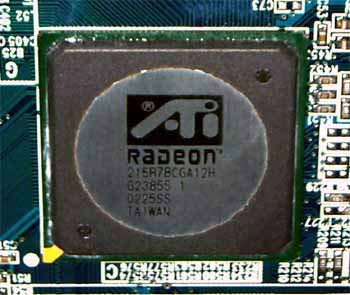
Although it has frequencies typical of the RADEON 7500, the complexity of the chip makes problems with its temperature mode, that is why it has a metallic lid. Hercules can't help using its proprietary roundish cooler with a logo in the center. 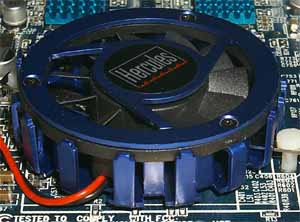
OverclockingUnfortunately, the potential of the card allows it to function properly only at 285/290 MHz, which is a very inconsiderable boost.Test system and driversTestbeds:
In the tests we used ATI Catalyst drivers 6.118. VSync was off. For comparison we used the following cards:
The tests of the RADEON 9000 were fulfilled by reducing a frequency of the Hercules 3D Prophet 9000 Pro to 250/400 MHz. Driver settingsIn the Part 1 you can learn about settings of the Catalyst drivers.Test results2D graphicsAs expected, the negative result obtained last time is entirely through the fault of the sample, because the current card from Hercules showed excellent quality in resolutions up to 1600õ1200õ85Hz and 1280õ1024õ100Hz.However, estimation of 2D quality is a subjective thing. Such cards will be produced by a lot of firms that is why quality will depend on a certain sample and a card-monitor tandem, especially on quality of a monitor and a cable. 3D graphics, 3DMark2001 - game tests3DMark2001, 3DMARKS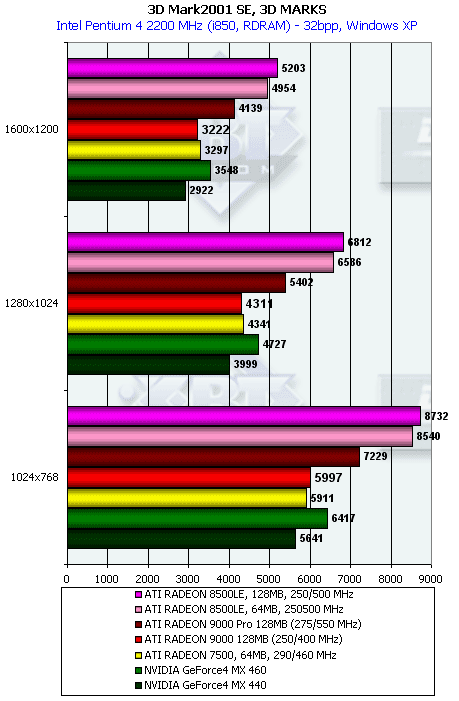 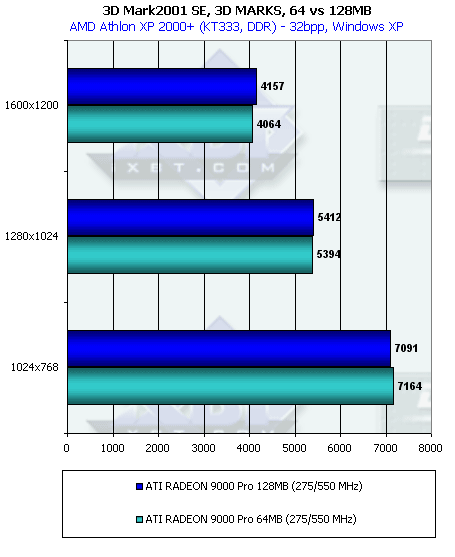
Comparison of the 64MB and 128MB cards revealed no speed difference
between them.
3DMark2001, Game1 Low details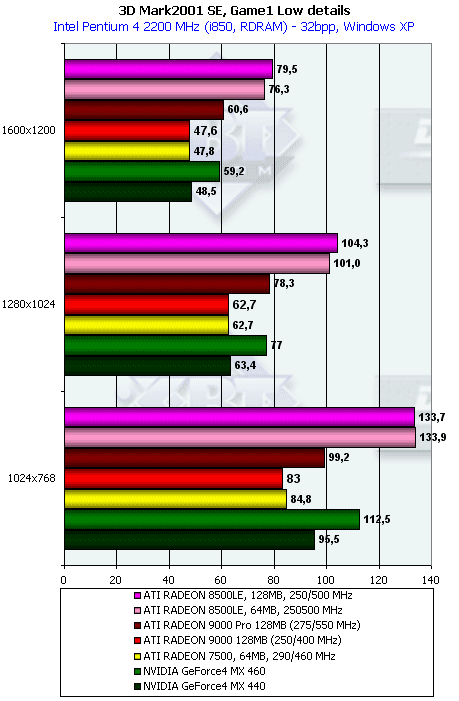 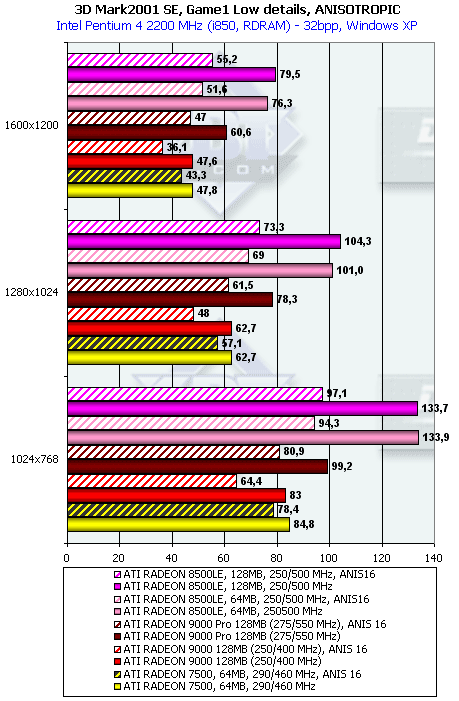
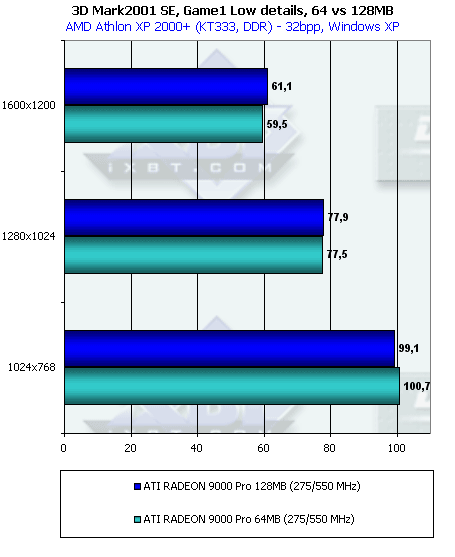
I guess that how the scores of the 64MB and 128MB cards relate needs
no comment.
3DMark2001, Game2 Low details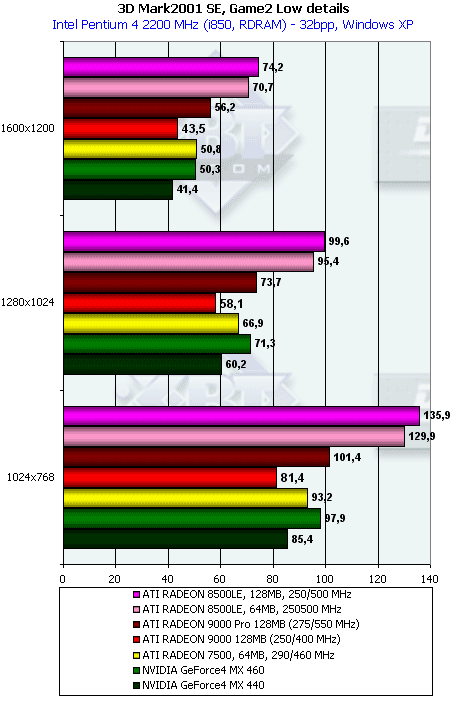 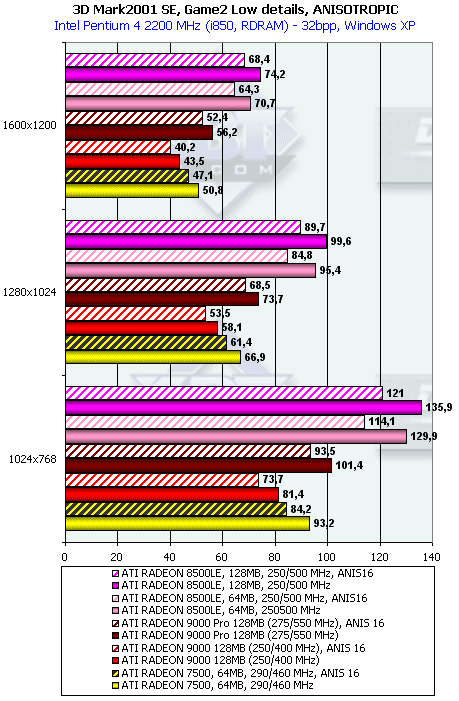
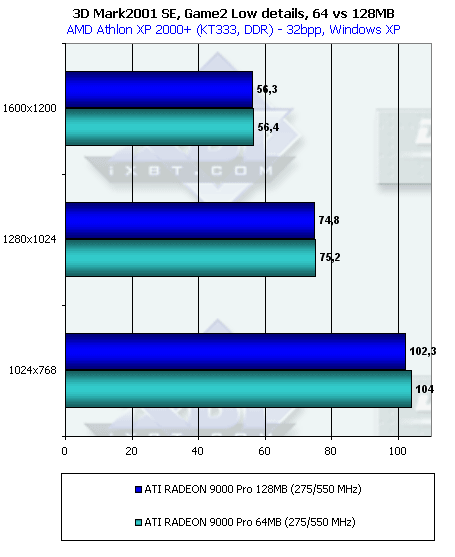
3DMark2001, Game3 Low details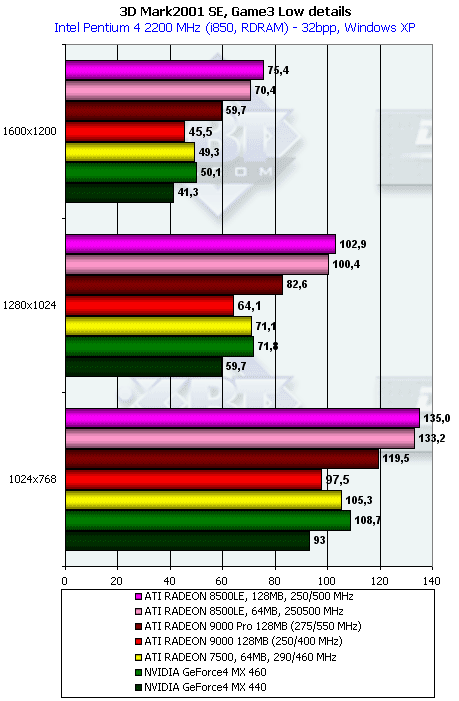 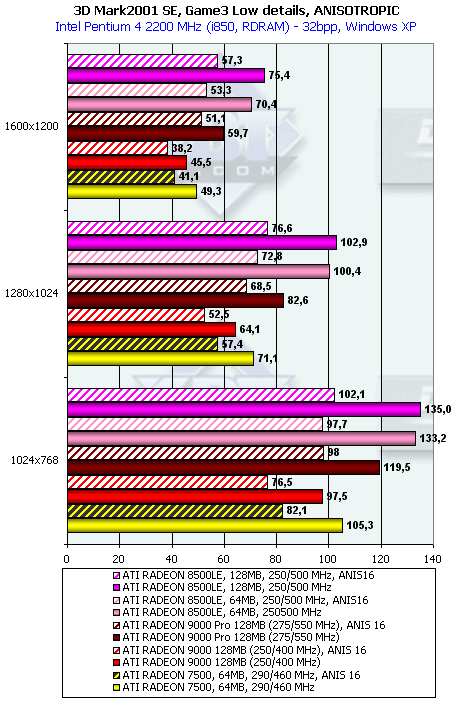
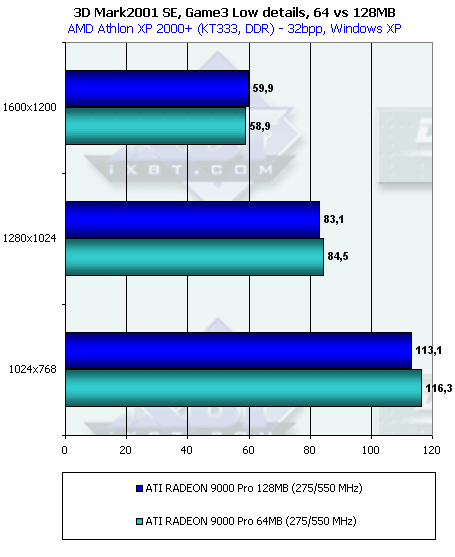
3DMark2001, Game4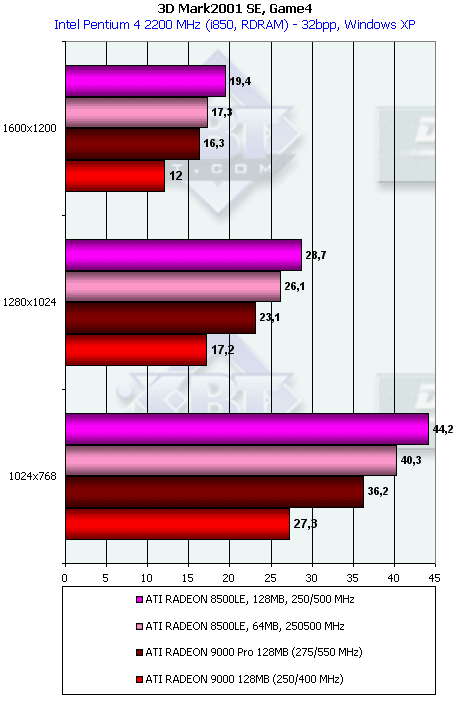 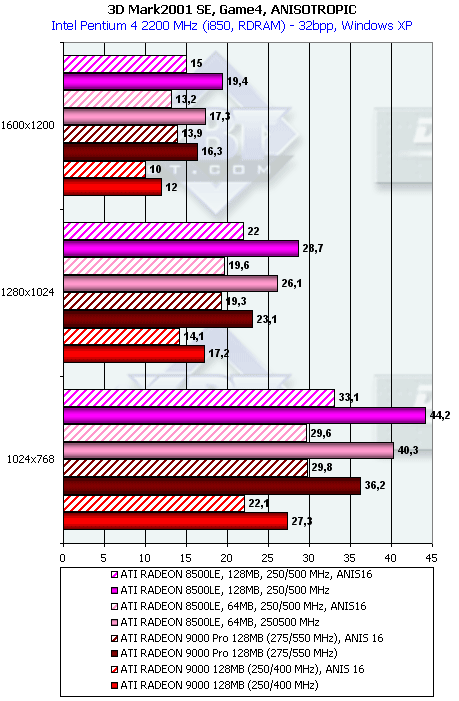
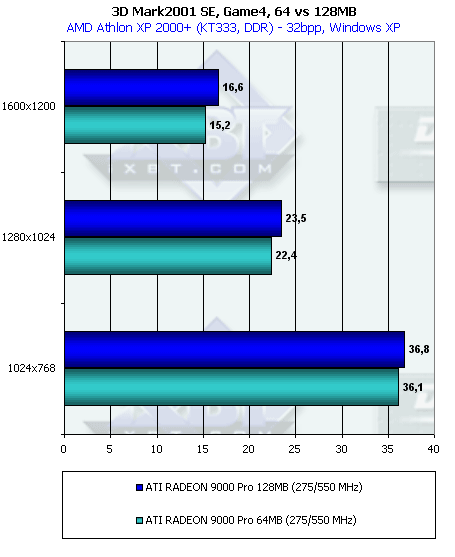
3D graphics, game testsFor estimation of 3D performance in games we used the following tests:
Quake3 Arena, Quaver
 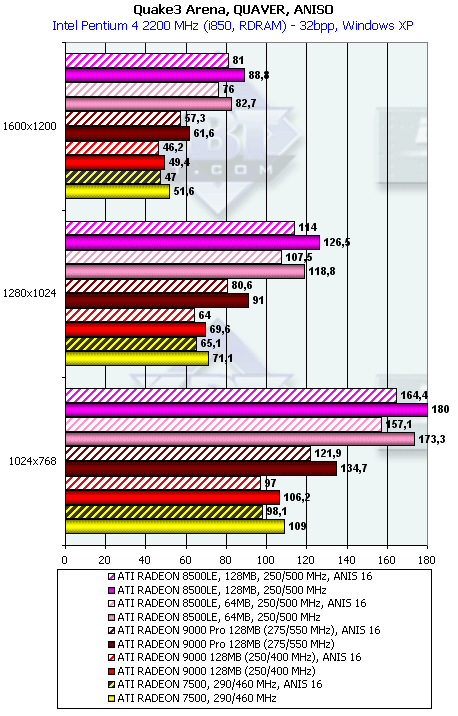
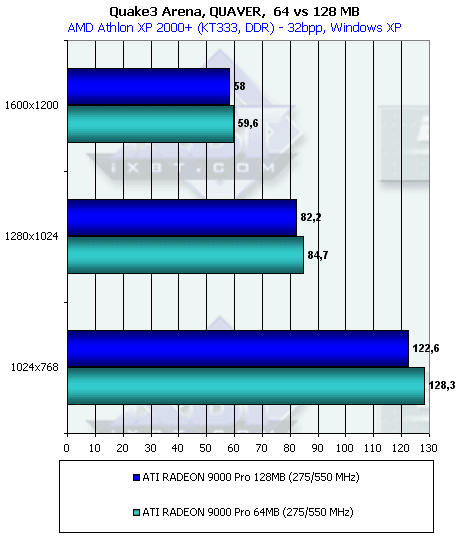
Serious Sam: The Second Encounter, Grand CathedralThe screenshots with the settings are given in the Part 1.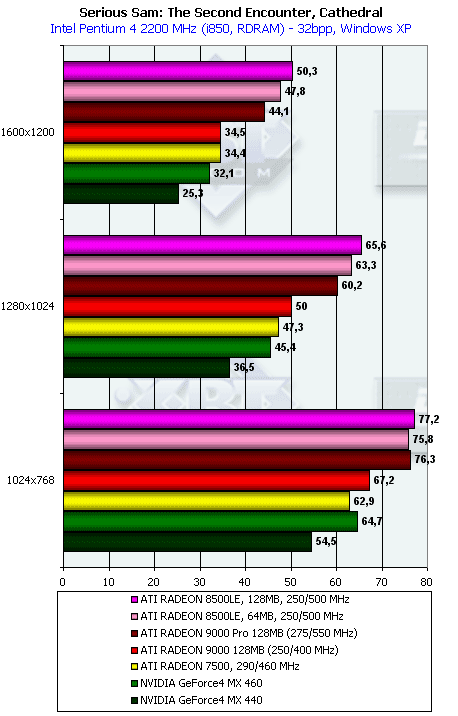 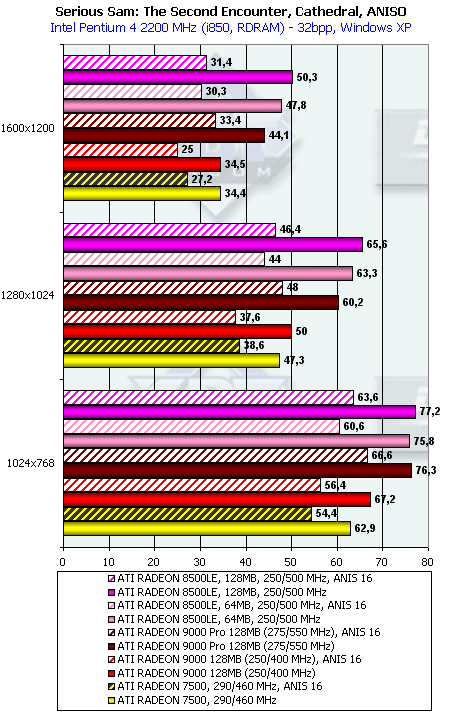
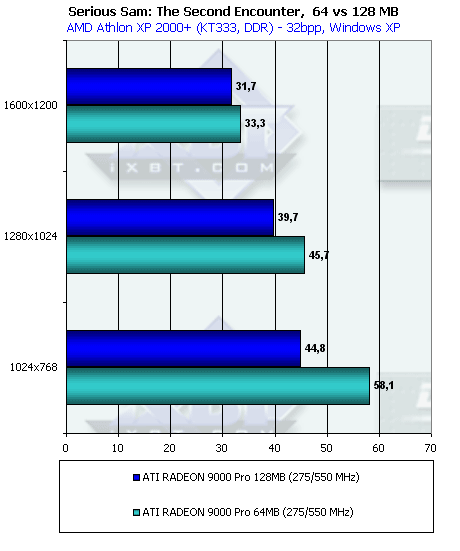
It is again unclear why the 128MB card runs slower than the 64MB one. I think it is again because of the memory from Samsung; some time ago we compared a card supplied with memory from this company (the card itself was from Hercules as well) with a card coming with the Hynix memory). Return to Castle Wolfenstein (Multiplayer), Checkpoint
 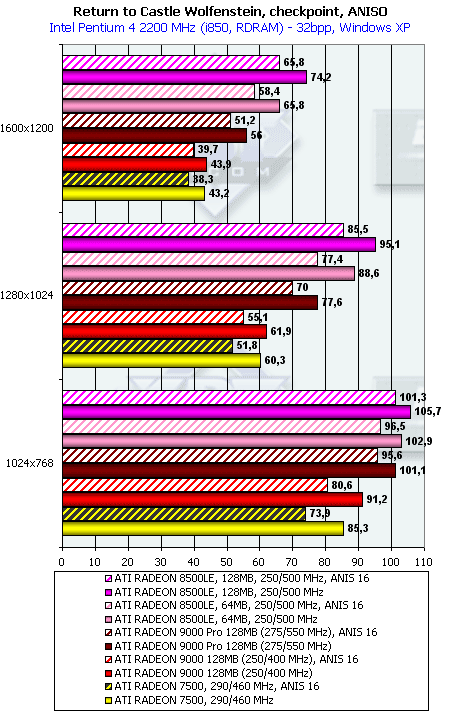
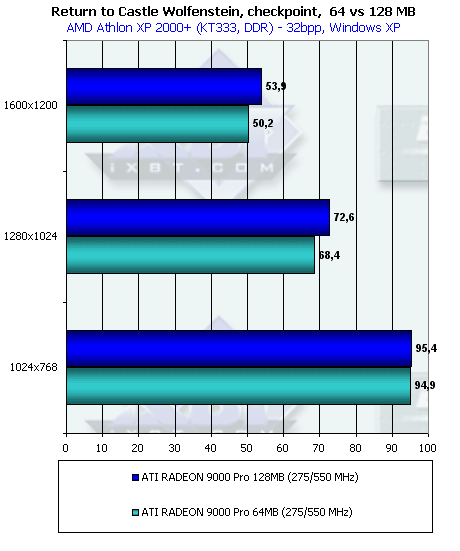
As for comparison of the 64MB and 128MB samples, this time the card with a greater RAM takes the palm. Comanche4 DEMO
 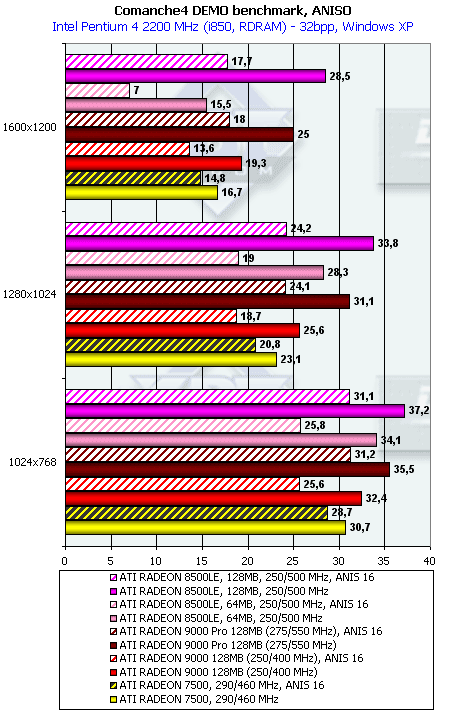
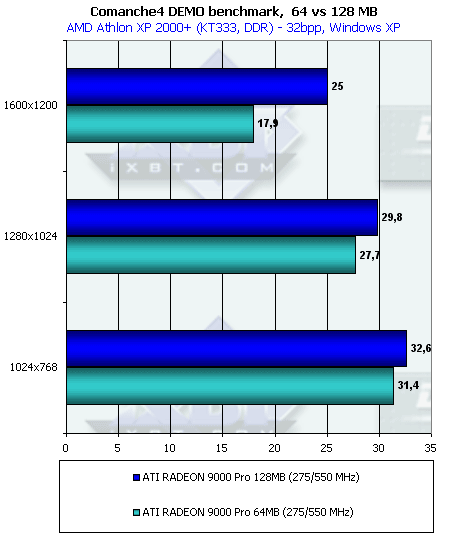
Unreal Tournament 2003 DEMO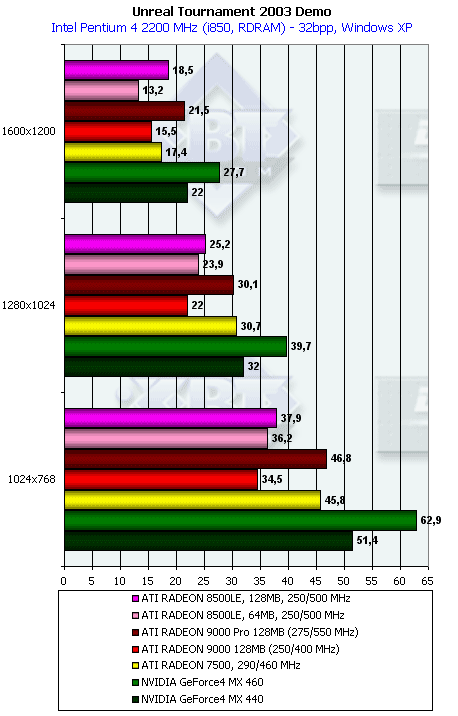 
3D quality in generalLast time I hadn't enough time to analyze quality of graphics of the new RADEON 9000. Surely, I mean 3D games. Unfortunately, there are flaws, in particular, in the Elders Scrolls III: Morrowind.
Look at the water. This is how pixel shaders of the RADEON 9000 work, whose increased speed was so much spoken in Part 1! Note that there are no problems in the 3DMark2001. For example, the Matrox Parhelia has no problems in the Morrowind. By the way, the latest version of the patch for the game - 1.1605 - was installed. 3D quality, anisotropic filteringDetails on operation of this function can be found in the respective part of 3Digest.This function is realized differently by different video-processor makers.
Besides, speed characteristics of anisotropic filtering made by ATI and
by
The screenshot gallery from the above mentioned part of the 3Digest is completed with anisotropy quality samples of the RADEON 9000.
However, let me remind it to you: 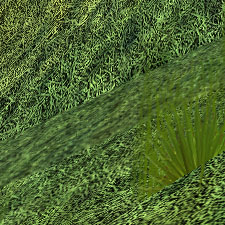 Conclusion
Andrew Worobiew (anvakams@ixbt.com)
Write a comment below. No registration needed!
|
Platform · Video · Multimedia · Mobile · Other || About us & Privacy policy · Twitter · Facebook Copyright © Byrds Research & Publishing, Ltd., 1997–2011. All rights reserved. | |||||||||||||||||||||||||||||||||||||||||||||||||||||